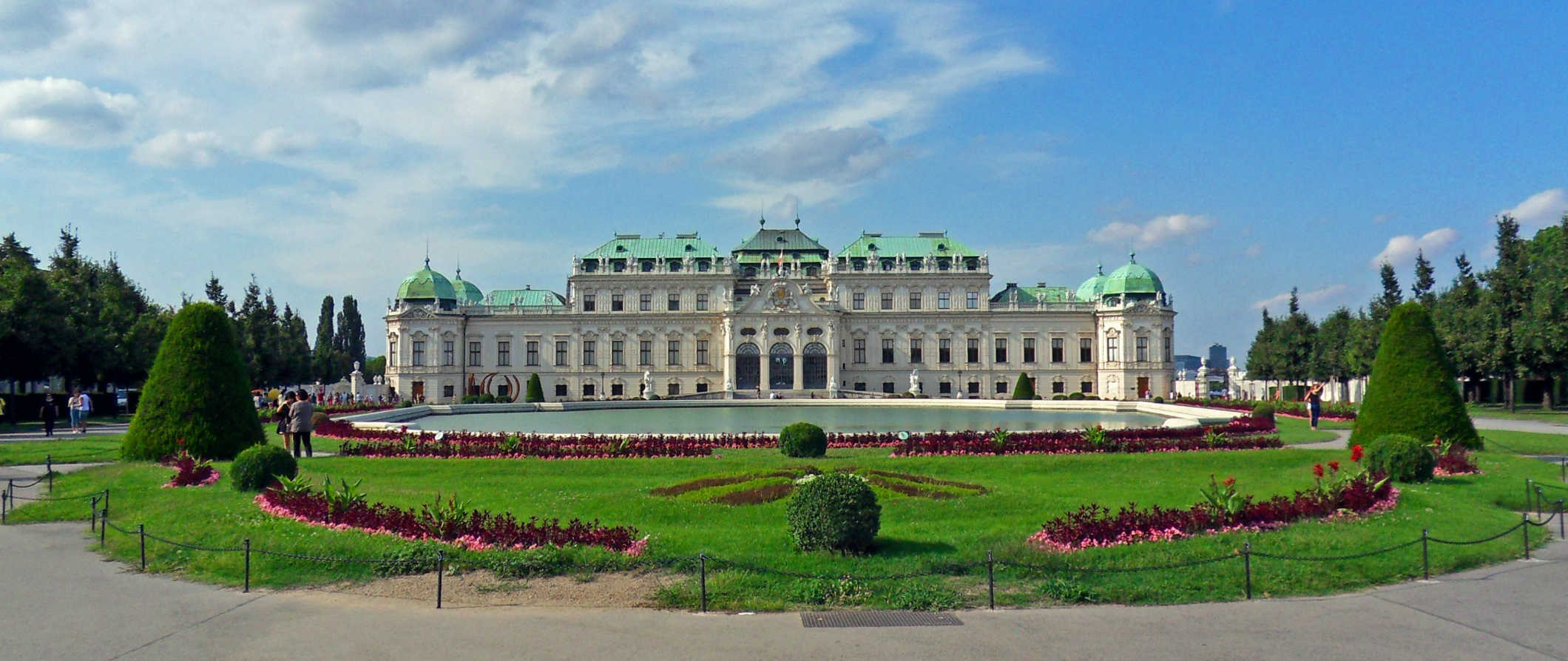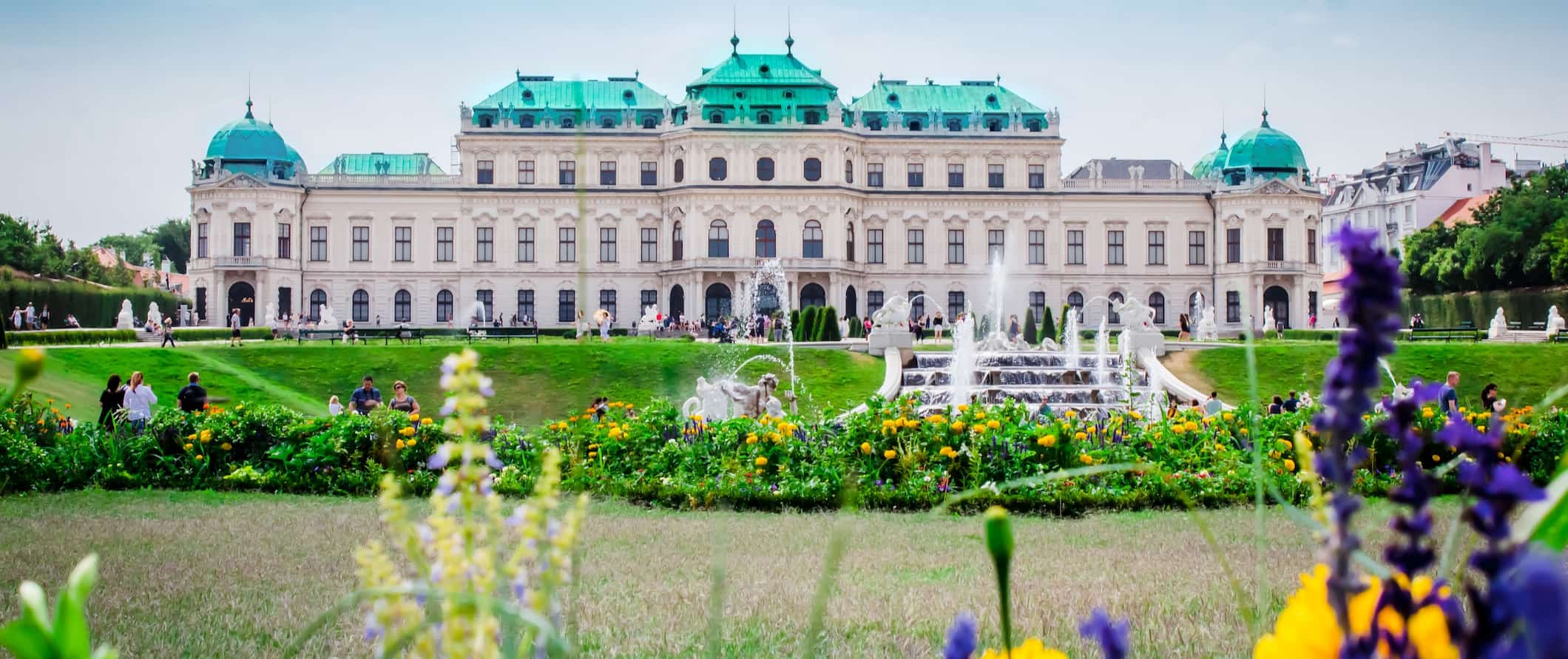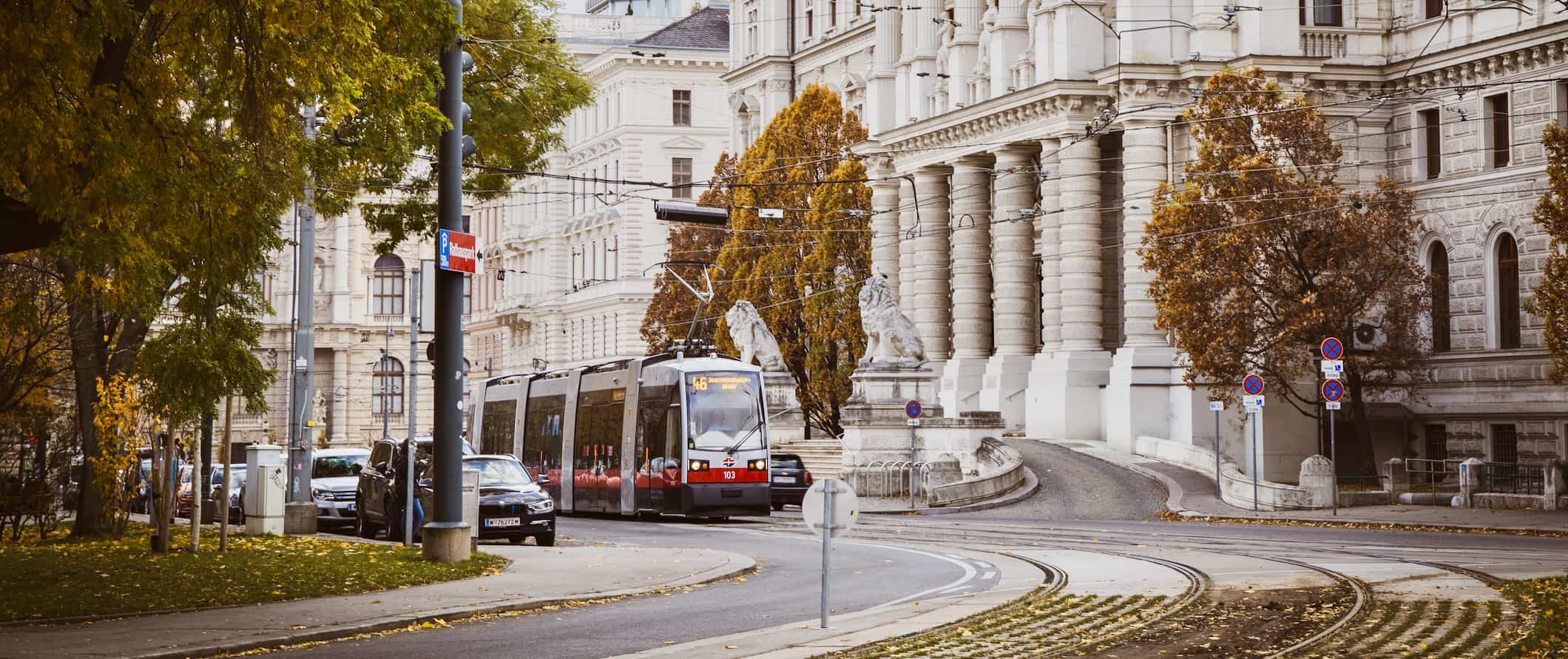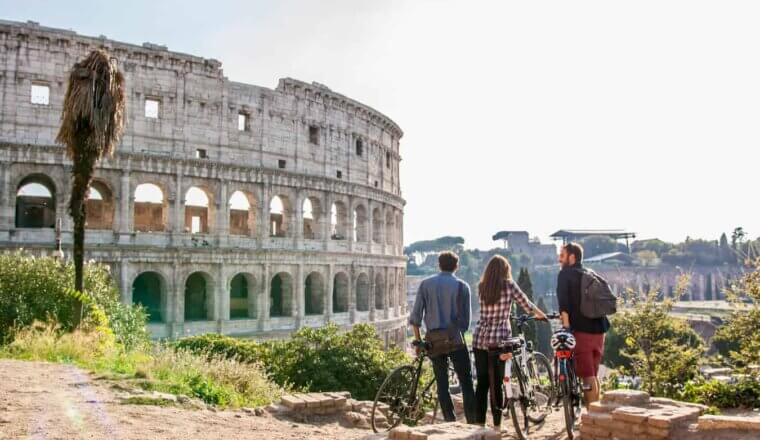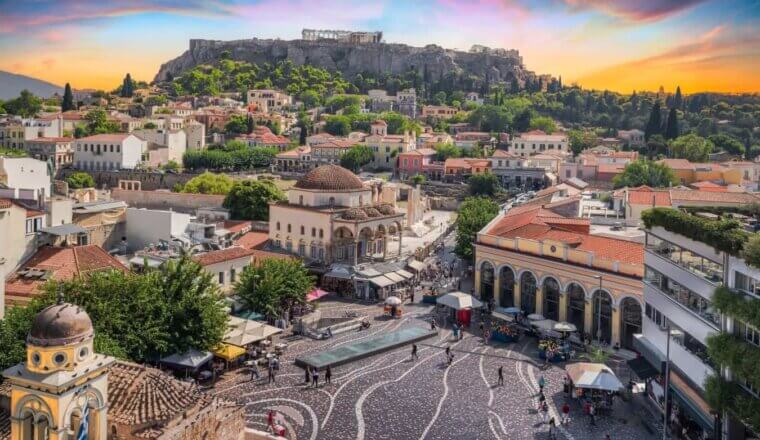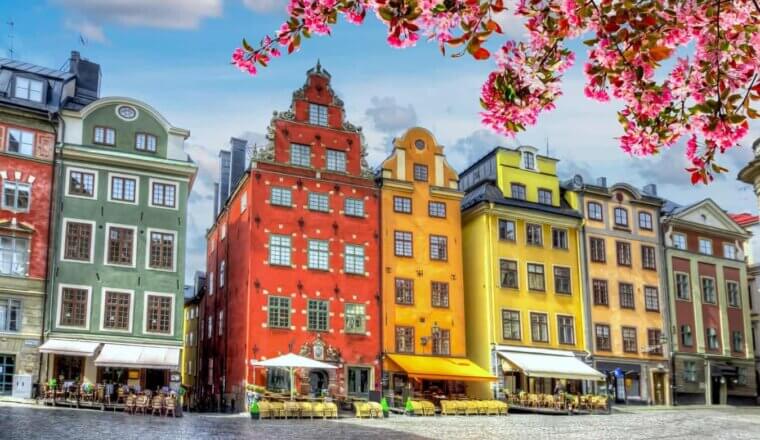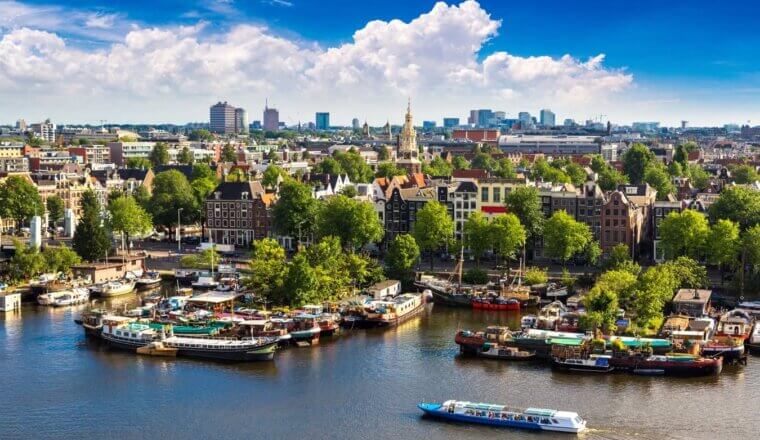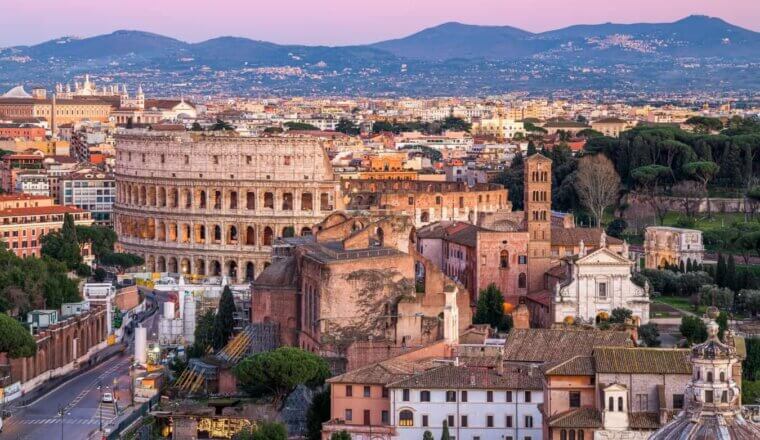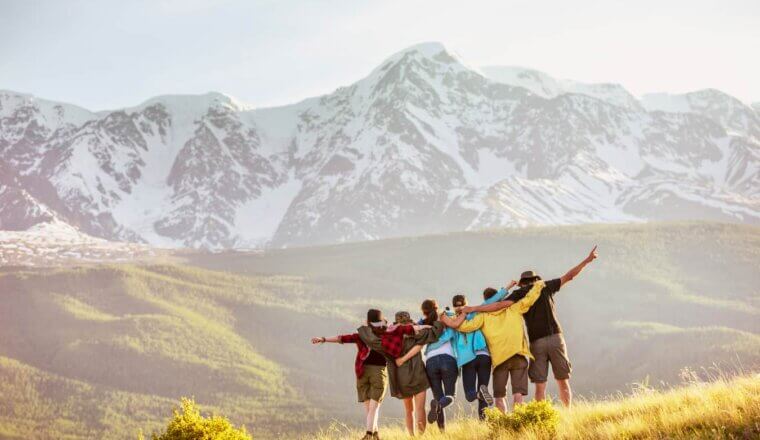Vienna. Home to schnitzel, Freud, Mozart, the Habsburgs, opera, art, coffee shops, and so much more.
Over the decade I have been visiting this city, I’ve watched Vienna change from a stiff capital city to a cool, hip, foodie, and arty paradise. (Ok, it’s always been an arty paradise and maybe the “stiff capital” was just my incorrect first impression.)
Since my first visit, I’ve come to appreciate the city and all it has to offer. Vienna has countless museums, palaces, markets, restaurants, quirky art exhibits, delicious food halls, neighbors a wonderful wine region, and is a quick train trip to Bratislava.
There’s a lot to do in Vienna and you can easily spend weeks trying to see it all. In fact, there’s so much to do here that I advise you to spend an extra day here. If you think three days is enough, spend four. If you’re here for four, spend five.
No matter how long you plan to be in the city, this Vienna travel guide can help you plan the perfect trip — and save money along the way!
Table of Contents
Click Here for City Guides
Top 5 Things to See and Do in Vienna
1. See Belvedere Palace
The Belvedere is home to an incredible art collection with works by Renoir, Monet, and Van Gogh, among others. It also has a large portrait collection. The Palace has a permanent collection at the Upper Belvedere while special exhibitions are held at the Lower Belvedere (contemporary art is located at the Belvedere 21, which is nearby). The free grounds feature beautiful fountains, gravel walkways, ponds, statues, plants, and flowers. Admission is 16 EUR and guided tours can be booked in advance for a flat rate fee of 90 EUR for up to 20 people. Belvedere 21 is closed on Mondays but has late night opening on Thursdays.
2. Visit Schonbrunn Palace
This 1,441-room palace is a UNESCO World Heritage Site and started off as a hunting lodge before becoming the summer residence of the Habsburgs, one of the most prominent dynasties in European history, during the 1700s. It’s now one of Vienna’s top attractions. The interior is incredibly ornate with paintings, woodwork, chandeliers, and elaborate decorations. You can explore 22 rooms with the Imperial Tour (18 EUR) or 40 rooms with the Grand Tour (22 EUR). You could easily fill a whole day here.
3. Explore the Hofburg Imperial Palace
One of the biggest palace complexes in the world, the Hofburg is the official residence of the President of Austria. Previously, it was the principal palace of the Habsburg dynasty for more than 7 centuries. There are several exhibits here, including the Sisi exhibit (which highlights the life of Empress Elisabeth) and the royal apartments themselves. The famous Vienna Boys Choir performs at High Mass at the Gothic Imperial Chapel every Sunday. The Sisi costs 16 EUR and includes admission to the Sisi Museum, the Imperial Apartments, and the Imperial Silver Collection. Free audio guides & printed descriptions are available.
4. Visit the Mozart Museum
Though Mozart lived at a handful of different addresses in Vienna, this is the only apartment that has survived. He lived here from 1784-1787. Spread over 3 floors, you can learn about his life, family, music, friends, and listen to his work. The exhibit on the first floor, consisting of four large rooms, two small rooms and a kitchen, is where Mozart and his family actually lived although you have to use your imagination as there is not much left of original furniture and not much is known about how the rooms looked or what they were used for. There’s a variety of paintings, artifacts, letters, and memorabilia from his life as well. Admission is 12 EUR.
5. Do a Wine Tour
Take a winery bike tour of the stunning nearby Wachau Valley. Vienna Explorer offers a full-day excursion (11 hours) that includes some sightseeing, and two wine tastings (with multiple samples at each tasting) for 129 EUR. Pedal Power also offers a 4-hour e-bike wine tour for 74 EUR. I always include a wine tour when I run tours to Vienna and it’s the number one thing people remember. Don’t skip it!
Other Things to See and Do in Vienna
1. See St. Stephen’s Cathedral
Stephansdom is a 12th-century Romanesque and Gothic cathedral in Vienna, noted for its colorful roof. The cathedral has been destroyed and rebuilt over the years, with the current version of the cathedral largely initiated by Duke Rudolf IV (1339–1365). Its most recent reconstruction took place just after World War II. You can take a tour of the cathedral, the catacombs, and climb the north and south towers (which offer excellent views of the city). Admission is 20 EUR, guided tours are 3.50 EUR and audio guides are 6 EUR. Catacomb tours are 6 EUR and going up the towers costs 5.50 EUR for the South Tower and 6 EUR for the North Tower.
2. Go to the Naschmarkt
This is Vienna’s largest open-air food market. It’s been operating for hundreds of years and has more than 100 stalls with a variety of international restaurants, street stalls, and grocers. It’s a little touristy (don’t go food shopping here) but it has a cool vibe and, on a warm sunny day, it’s nice to sit out with a meal and a glass of wine. Despite its fame, there are still a lot of locals here. Be sure to hit up Umarfisch for seafood and wine. On Saturdays, there’s a flea market here too.
3. See the art in the Museumsquartier
Once the imperial stables, the Museumsquartier is home to all kinds of art and cultural institutions and events. Three museums worth checking out in the MQ are the Leopold Museum for Art Nouveau and Expressionism; Kunsthalle Wien, an exhibition center with rotating exhibitions; and the Museum of Modern Art, which has the largest collection of modern art in central Europe. A pass to all three museums is 27.50 EUR. The Museumsquartier is also home to a number of festivals throughout the year (including open-air concerts and a fashion week). A variety of tours are run on some Saturdays including a backstage tour offering the chance to see behind the studio doors of the guest artists.
4. Visit the House of Music
This is a small but fascinating museum that features four floors of exhibits on some of the world’s most well-known Austrian composers, including Mozart, Schubert, Strauss, and Schoenberg. You can view manuscripts and artifacts, and there’s also a virtual stage where you can conduct your own symphony. It’s fun, interactive, and educational. Admission is 16 EUR.
5. See a classical performance
Austria has contributed its fair share of composers to the world, so it’s no surprise that you can find plenty of opportunities to indulge in the classics here. Just going to one of the many theaters and concert halls in Vienna is an experience in and of itself as the buildings are so historic and beautifully decorated. If you’ve ever considered taking in an opera, symphony, or ballet (the Vienna State Ballet is one of the best in the world), this is the place to do it. Prices vary depending on the performance but expect to pay at least 40 EUR for standard tickets. For opera, I recommend buying last-minute standing-room tickets for 4-18 EUR the day of a show. The 435 tickets usually go on sale 80 minutes before it starts (you can line up earlier than that, but they don’t start selling until right before the show). It’s first come, first served and you can only buy one ticket per person but it’s the cheapest way to see a performance!
6. Visit the Museum of Art History
This is the largest art museum in the country, with works from ancient Egypt and Greece through to the 18th century. There are over 700,000 items in the collections so it’s worth taking the time to explore (especially if you’re a history buff like me). Opened in 1891, the primary collection originally belonged to the Habsburgs, which includes tons of portraits and armor. Admission is 18 EUR.
7. Hang out in the Jewish Square
For centuries, Vienna was home to a sizable Jewish population. Then the Nazis came. This area of town features two important museums: the Vienna Jewish Museum, which details the role Viennese Jews played in the development of city life; and the Medieval Synagogue (Misrachi-Haus), which highlights the history of Jewish life in Vienna. Admission is 12 EUR and includes entry to both sites within four days of issue. There is also the sobering Holocaust memorial nearby, designed by British artist Rachel Whiteread.
8. Walk the Ring Road
This historic loop is brimming with beautiful architecture. It’s here where you can find the Parliament building, City Hall, both the Museum of Fine Art and the National History Museum, as well as the State Opera. It’s a relaxing (and free) way to spend some time soaking up the city and admiring its history.
9. Visit the Freud Museum
Sigmund Freud, the famous founder of psychoanalysis, lived in this apartment-turned-museum from 1891-1938. The museum was opened in 1971 with the help of Anna Freud (his youngest daughter) and is home to the original furniture, Freud’s private collection of antiques, and first editions of his works. There are also films from his private life. It’s small and only takes about an hour to visit. Admission is 14 EUR.
10. Visit the Albertina
The Albertina is one of the best museums in the city (which says a lot because this is a city of museums). It’s housed in one of the private residence wings of the Imperial Palace. It’s most famous for its print collection, which is comprised of over one million prints and 60,000 drawings. However, they have a lot of temporary exhibits that rotate through here too, which I found to be the highlight (I saw an excellent one on Raphael, the famous Italian Renaissance painter). Admission to the Albertina and the Albertina Modern costs 2.90 EUR.
11. Visit the National History Museum
Home to a detailed anthropology exhibit, as well as a planetarium and prehistoric exhibit, the National History Museum is worth the time if you’re a museum buff. Their collection boasts over 100,000 items, including a huge collection of meteorites. It’s also home to the 25,000-year-old Venus of Willendorf statue, which was discovered in Austria. There’s also a planetarium that offers shows in German and English (the live shows are only available in German). Admission is 14 EUR.
12. Day trip to Bratislava
Slovakia’s capital of Bratislava makes for a great day trip from Vienna. Located just one hour away, you can easily head there for a day to explore its charming medieval center, see its several castles, drink at the historic beer halls, and stroll along the Danube. Bratislava is a relatively small capital so it’s easy to get around on foot. Trains depart regularly from Vienna for as little as 11 EUR, while Flixbus runs a regular bus service with tickets starting at around 6 EUR.
13. Explore Vienna Woods
This beautiful woodland (known as Wienerwald) is located on the outskirts of the city and is filled with a lot of hiking paths. It’s located around 30 kilometers (19 miles) from the city, extremely popular with locals (few tourists get out there). If you don’t have a vehicle, you can take public transportation or try the ride-sharing service BlaBlaCar. It’s a nice place to relax with a book, stroll, and enjoy the laid-back pace of life.
Vienna Travel Costs
Hostel prices – Hostel dorms start around 16 EUR per night for an 8-12-bed dorm. Dorms with 4-6 beds cost 25-35 EUR. Free Wi-Fi is standard and most hostels have kitchens. For a private room, expect to pay 40-75 EUR per night.
For anyone traveling with a tent, camping is available outside the city. Camping in Vienna starts around 8 EUR per night in the low season for a single tent site without electricity and around 22 EUR in the peak season (July-August).
Budget hotel prices – Two-star budget hotels start around 40 EUR per night for a double or twin but often cost closer to 60-80 EUR. This usually includes free Wi-Fi and basic amenities (TV, coffee maker) but rarely free breakfast.
Airbnb is another budget-friendly option here, with private rooms starting around 50 EUR per night. For an entire home or apartment, expect to pay at least 65 EUR per night (though prices average around 90 EUR).
Food – Austrian cuisine is a hearty, meat-oriented one, with a focus on meat, soups, stews, and pastries. The country’s food has been influenced by its neighbors in Central Europe, as well as from the expansion of the Austro-Hungarian Empire (1867–1918). Popular dishes include rindsuppe (beef soup), smoked meat with sauerkraut, wiener schnitzel (traditionally made from veal), strudel, and tafelspitz (beef boiled in broth). Breakfast usually involves bread or rolls with cold cuts, jam, or cheese.
A typical inexpensive restaurant meal costs around 15 EUR. Expect to pay at least 35 EUR for a three-course meal at a mid-range restaurant.
If you’re on a budget, stick to eating at the local markets where you can find a great selection of traditional Austrian food (like schnitzel, goulash, sausages, and potatoes) as well as Asian, Greek, and Middle Eastern dishes for around 8-16 EUR.
Fast food like McDonald’s or Burger King costs around 9 EUR for a combo meal. A large pizza should cost less than 20 EUR while Chinese food is 9-15 EUR for a main dish. Sandwiches and salads cost between 7-9 EUR.
A beer at the bar costs around 4.25 EUR while a latte/cappuccino costs 3.80 EUR. Bottled water is 2 EUR.
If you are planning to cook your own food, a week’s worth of groceries costs around 30-50 EUR for basic staples like rice, pasta, vegetables, and some meat. Hofer and Penny Markt are two of the cheaper supermarket options for groceries. For more organic options (or if you have dietary restrictions), shop at Spar.
For tasty open-faced sandwiches, check out Piotrowski. And if you’re vegan or vegetarian, head to The LaLa (healthy eats and tasty baked goods) or Swing Kitchen (fast food/burgers).
Backpacking Vienna Suggested Budgets
On a backpacker budget of 65 EUR per day, you can stay in a hostel dorm, cook all of your meals, visit a few museums, take a free walking tour, limit your drinking, and take local transportation to get around. If you plan on drinking, add 5-10 EUR to your budget per day.
On a mid-range budget of about 170 EUR, you can stay in an Airbnb or private hostel room, eat out for most meals, have a few drinks at the bar, see more museums and palaces, a day trip to Bratislava, and take the occasional taxi to get around.
On a “luxury” budget of 300 EUR per day, you can stay in a hotel, eat out for all your meals, drink out at the bar as much as you’d like, rent a car or take taxis to get around, and do private guided tours. This is just the ground floor for luxury though. The sky is the limit!
You can use the chart below to get some idea of how much you need to budget daily, depending on your travel style. Prices are in EUR.
Vienna Travel Guide: Money-Saving Tips
Vienna can be an expensive city if you don’t watch your budget. Accommodation, coffees, museums, and eating out can add up quickly. Here are some tips to help you save money when you visit Vienna:
- Take a free walking tour – Vienna offers a handful of free walking tours which are great ways to get familiar with the city and the culture. Good Tours, Anna Loves Vienna, Vienna Greeters, and The Original Free Vienna Walking Tour are all great options. Just be sure to tip your guide!
- Cook your own meals – If you want to save money on your food budget, stay in a hostel or Airbnb with a kitchen. Buying your own groceries may not be as glamorous as eating out, but it saves you money!
- Stay with a local – Staying with a local via Couchsurfing (or similar sharing economy sites) is a great way to save money. It’s also a great way to meet a knowledgeable local who can help you better understand the city and its people.
- Skip the fast train into Vienna – Unless you are in a rush to get downtown, skip the City Airport Train. It’s 11 EUR compared to the regular train (which is 4.30 EUR). The time difference is negligible, and that extra 6.70 EUR could be better spent on a cold beer!
- Get a Vienna PASS – With the Vienna PASS you get entry to over 60 attractions, museums, and monuments throughout the city. It costs 76 EUR for a one-day pass but if you’re planning to visit several of Vienna’s most popular museums/galleries then getting the pass could save you a fair amount of money especially as it has an option for public transportation too! If you’d rather not spend that much, some of the museums (that also belong to Vienna Pass) have also developed their own ticket packages.
Where to Stay in Vienna
Vienna has plenty of fun, social hostels. Here are my favorites ones to stay at:
How to Get Around Vienna
Public transport – Public transport in Vienna is safe, fast, and efficient. There are four main forms of public transport: bus (Autobus), local train (S-Bahn), tram (Straßenbahn), and subway (U-Bahn). Public transportation in Vienna works on an honor system. This can be confusing at first as there are no formal ticket checks or barriers at stations making it appear that public transport is free. Public transport is not free. You need to buy a ticket at the machines within the stations. If you get caught by one of the undercover ticket inspectors they charge you a hefty fine.
A single ticket is 2.40 EUR (zone 1 only), a 24-hour pass is 8 EUR, a 48-hour pass is 14.10 EUR, and a 72-hour pass is 17.10 EUR. The weekly pass (valid from Monday to Monday) is also 17.10 EUR.
If you’re flying into Vienna, the direct airport train is only 16 minutes to downtown and costs 11 EUR (19 EUR return). If you’re not in a hurry, however, take the regular train instead. It is only 4.30 EUR.
Taxis – Taxis should be avoided if you’re on a budget as they can add up fast. Fares start at 4 EUR and go up by 1.70 EUR per kilometer. Uber is also available here and is cheaper than a taxi so use it instead.
Bicycle – If you want to explore the city by bike you can find rentals for under 10 EUR per day via ListnRide. It matches you with a local renting their bike for cheap.
Car Rental – You don’t need to rent a car to get around Vienna. Most areas are walkable and public transportation is efficient. However, if you want to rent a car to get out of the city, expect to pay at least 35 EUR per day. Make sure to have an International Driving Permit (IDP) — you need one for any car rental.
To find the best car rental prices, use Discover Cars.
When to Go to Vienna
There’s no wrong time to visit Vienna. The summer months (June-August) offer the best weather. However, this is the peak season for tourists so things are busier. During July and August, many local residents leave the city for what they call Sommerpause (Summer break) meaning many small local businesses close. Expect daily highs around 25°C (77°F)
Winter is from December to March. It gets cold, with temperatures dropping as low as -15°C (5°F). That said, November and December are considered to be the most magical months in the city because of the Christmas markets. The city looks gorgeous covered in snow!
Personally, I think the best time to visit Vienna is the shoulder season (April-June and September-October). It’s still warm during this time but there aren’t as many other tourists and prices aren’t as high as in the summer.
How to Stay Safe in Vienna
Vienna is a very safe city. That said, pick-pocketing can still occur in large crowds or on crowded public transportation. The 1st District (where you can find many of the city’s historic landmarks) and the 4th District (Karlsplatz/Karlskirche) are the main areas to be vigilant.
Be on the lookout for fake event tickets being sold on the street. This can be easily avoided by only booking tickets directly from the venue.
Also be cautious of people posing as plain-clothes police officers asking to see your passport. This has become common in the main tourist areas and in public transport stations. When you produce your passport, they take it and accuse you of a minor crime and demand you pay a fine. If you refuse, they can get aggressive and while you are distracted an accomplice picks your pockets.
While these scams are rare, it’s better to be safe than sorry. You can read about more common travel scams here so you know what to look out for.
Solo female travelers should generally feel safe here. However, the standard precautions apply (never leave your drink unattended at the bar, never walk home alone intoxicated, etc.). Look for specific tips on solo female blogs as they’ll have more tips from experience than I can provide.
If you experience an emergency, dial 112 for assistance.
When in doubt, always trust your instincts. If a taxi driver seems shady, get out. If your hotel or accommodation is seedier than you thought, go somewhere else. Make copies of your personal documents, including your passport and ID, in case of an emergency.
The most important piece of advice I can offer is to purchase good travel insurance. Travel insurance protects you against illness, injury, theft, and cancellations. It’s comprehensive protection in case anything goes wrong. I never go on a trip without it as I’ve had to use it many times in the past. You can use the widget below to find the policy right for you:
Vienna Travel Guide: The Best Booking Resources
These are my favorite companies to use when I travel. They consistently have the best deals, offer world-class customer service and great value, and overall, are better than their competitors. They are the companies I use the most and are always the starting point in my search for travel deals.
- Skyscanner – Skyscanner is my favorite flight search engine. They search small websites and budget airlines that larger search sites tend to miss. They are hands down the number one place to start.
- Hostelworld – This is the best hostel accommodation site out there with the largest inventory, best search interface, and widest availability.
- Booking.com – The best all around booking site that constantly provides the cheapest and lowest rates. They have the widest selection of budget accommodation. In all my tests, they’ve always had the cheapest rates out of all the booking websites.
- HostelPass – This new card gives you up to 20% off hostels throughout Europe. It’s a great way to save money. They’re constantly adding new hostels too. I’ve always wanted something like this and glad it finallt exists.
- Get Your Guide – Get Your Guide is a huge online marketplace for tours and excursions. They have tons of tour options available in cities all around the world, including everything from cooking classes, walking tours, street art lessons, and more!
- The Man in Seat 61 – This website is the ultimate guide to train travel anywhere in the world. They have the most comprehensive information on routes, times, prices, and train conditions. If you are planning a long train journey or some epic train trip, consult this site.
- Rome2Rio – This website allows you to see how to get from point A to point B the best and cheapest way possible. It will give you all the bus, train, plane, or boat routes that can get you there as well as how much they cost.
- FlixBus – Flixbus has routes between 20 European countries with prices starting as low 5 EUR! Their buses include WiFi, electrical outlets, a free checked bag.
- SafetyWing – Safety Wing offers convenient and affordable plans tailored to digital nomads and long-term travelers. They have cheap monthly plans, great customer service, and an easy-to-use claims process that makes it perfect for those on the road.
- LifeStraw – My go-to company for reusable water bottles with built-in filters so you can ensure your drinking water is always clean and safe.
- Unbound Merino – They make lightweight, durable, easy-to-clean travel clothing.
- Top Travel Credit Cards – Points are the best way to cut down travel expenses. Here’s my favorite point earning credit cards so you can get free travel!
Vienna Travel Guide: Related Articles
Want more info? Check out all the articles I’ve written on backpacking/traveling Europe and continue planning your trip:
